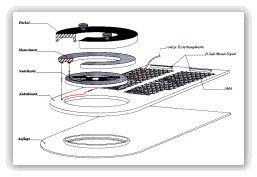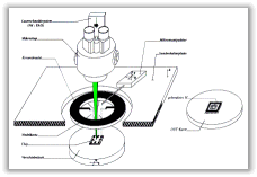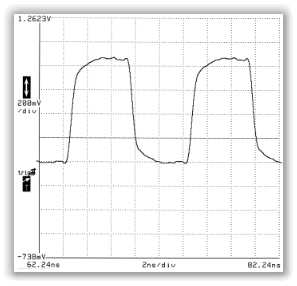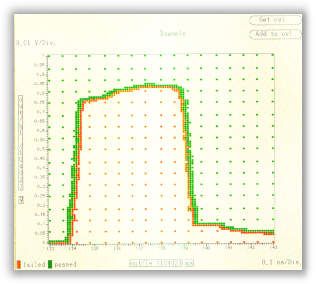URL: https://fe.desy.de/sites/site_fe/content/fec/activities/characterization/ate_system/@@siteview
Breadcrumb Navigation
Probe Station-based ATE System
|
For on-wafer design verification and characterization of complex mixed-signal integrated circuits (ICs) an adaption of a HP 82000 Semiconductor Testsystem and a SUSS Probe-Station PM8 was developed. The probe station is equipped with manual passive and active probe heads for DC and high-frequency measurements up to 20 GHz. A microscope in conjunction with a laser-cutting system is supplied for inspection, failure analysis and flat panel repair. |
|
|
152 tester channels and the 4 floating voltage sources of the Tester are connectable with a needle probe each. Fig. 3 shows the electrical connection concept with a set of 3 PCBs and semi-rigid coaxial cables. The PCBs are suspended below prober platen.In order to compensate horizontal probe inaccuracies with respect to the pad topography of the device under test (DUT), the PCBs are hinged around the x- and y-axis |

|
|
The versatile probe card can be assembled with probes to match the individual requirements of the DUT and its pad topography. The probe card can be configured with up to 152 tungsten needles and 6 Kelvin-Power probes on the bottom. Additionally up to 8 ceramic blades for high-frequency probing (bandwidth in GHz-range) can be assembled on top of the board. Due to its accessibility from top of the prober platen, the probe card is easily changeable in the system arrangement (c.f. Fig. 3). |

|
Fig. 4 and Fig. 5 display the measured electrical behaviour of the complete ATE-system. Fig. 4 depicts a scope plot at probe. The pulse stream was generated by the HP 82000 tester and shows rise times (20%-80%) below 700 ps. Fig. 5 displays a shmoo-plot of a single pulse performed by the Tester. The pulse was fed into a probe using an external generator. The HP 82000 tester specifications for ECL- and TTL-logic are still achieved at probe.

Fig.4 |

Fig.5 |




